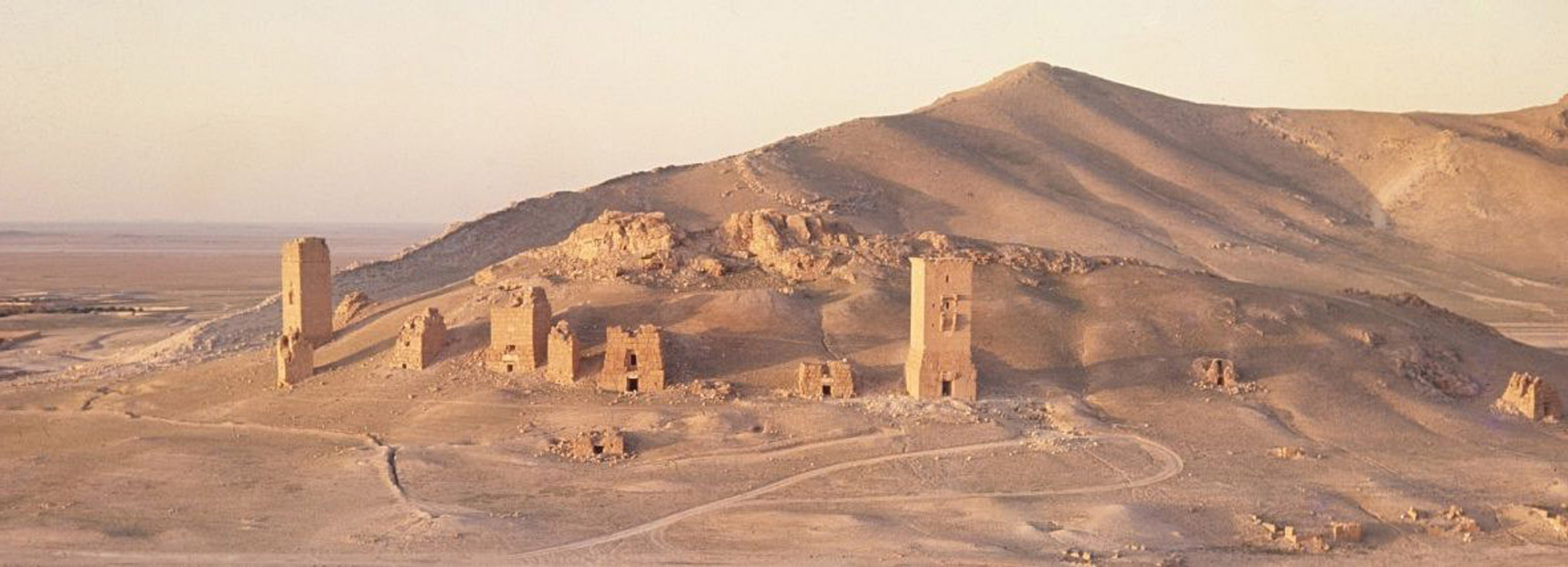
- Home
- Explore the site
- Urbanism and architecture
- Other sanctuaries
The Temple of Nabu
Two other large sanctuaries besides Bel and Baalshamin have been excavated and surveyed. The temple dedicated to Nabu and other Mesopotamian gods in the centre of the city probably most closely resembles a Greek temple of the same period, with its peripteral colonnade and stepped stylobate; however, its roof decorated with merlons and its cella with high windows recall the Temple of Bel. It opened to the south and a luxurious monumental entrance added in the 2nd century rapidly fell out of use. The construction of the long colonnaded street north of the temple clipped the courtyard with porticoes and an area occupied by two shops was used to create an entrance from what was now the main street. The Elahbel family, owners of one of the most lavish burial towers in the western necropolis, seems to have played a leading role in administering the sanctuary.
The temple of the goddess Allat
To the west of the city, the sanctuary of the Arab goddess Allat was modified numerous times as revealed during the Polish-led excavations. Around a scrupulously respected primitive chapel, a fairly simple temple was built in the Greco-Roman style with a colonnade on the east facade aligned with the street. Most remarkable is the fact that the goddess, who had no iconographic tradition of her own since the Arabs did not represent their gods, was first equated with Atargatis and depicted as a goddess of animals, before a statue of Athena of Attic inspiration was placed in her temple after 270.
Several other sanctuaries mentioned in the texts have not been clearly identified: the sanctuary of Atargatis, the sanctuary of the sacred grove dedicated to Aglibol and Malakbel, and a sanctuary of Arsu on the edge of the wadi.



